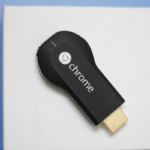Long-Term Evolution (LTE) is a technology used in place of traditional radio systems that rely on radio frequencies. Instead, it uses cellular networks and Wi-Fi to maintain a connection. Push-to-talk devices are also run via cellular networks and may be used for 5G communication.

Since LTE devices use cellular networks, they’re capable of maintaining a connection across long distances and can be used nationwide so long as cellular coverage is present. Push-to-talk technology allows the user to press the PTT button and send voice data over to others through the cellular network. There are even options that allow international coverage, depending on the provider.
A major reason radios are used as additional forms of communication is to have a backup when cell phone service fails. In areas where power outages and connections are likely, your smartphone may not hold up, rendering the need for an additional device. For more information on the power of LTE push-to-talk walkie talkie devices, continue reading below.
LTE Push-To-Talk Walkie Talkie Devices
Unlike traditional walkie-talkie devices, LTE push-to-talk alternatives use existing cellular networks to send voice data to other users in your group. In this way, your radio uses push-to-talk functionality to transmit information to those in your group. These connections are private, giving users the added security they need and without interruptions from users outside their group.
Built-In Fallback Mechanism
When one network drops, the technology on these walkie talkie devices automatically switches over to the next available network, keeping users connected even when traditional walkie talkie systems and smartphones fail. Although these systems still rely on Wi-Fi or cellular networks to function, they may serve as additional tools for communication in emergencies. First responders and other essential personnel often utilize LTE push-to-talk radio devices to stay in communication during public safety jobs.
Additional Pathways For Connection As Safeguards
Advanced walkie talkie systems use multiple or all available cellular networks to help users stay connected regardless of network drops. With greater redundancy and network flexibility, these radio systems provide users with additional pathways for connection, safeguarding against potential failures. First responders, workers in construction and other hazardous environments, and employees of the logistics and transportation industry may all benefit from LTE radios for the additional reliability factors that enhance connection capacity in difficult conditions and emergencies.
Likewise, families may want to purchase LTE radio systems as part of a group safety plan. Individuals living in parts of the country exposed to natural disasters may find LTE push-to-talk radio systems a valuable resource for their safety. No licensing is required, and there are no monthly fees for these devices, making them applicable and affordable options for personal and professional use.
Maintaining Stable Connectivity
With walkie talkie systems that function nationwide, dual-mode capabilities make this possible. LTE radios utilize Wi-Fi and cellular networks to provide additional flexibility and to bypass limited cell service availability. For users who want to maintain stable connectivity, even in crowded regions, radios that work nationwide are potential choices to consider.
“Break the boundaries of distance—stay connected anywhere, anytime with LTE-powered walkie-talkies that turn the entire nation into your network.” 📡🌍🔊
Join 25,000+ smart readers—don’t miss out!





